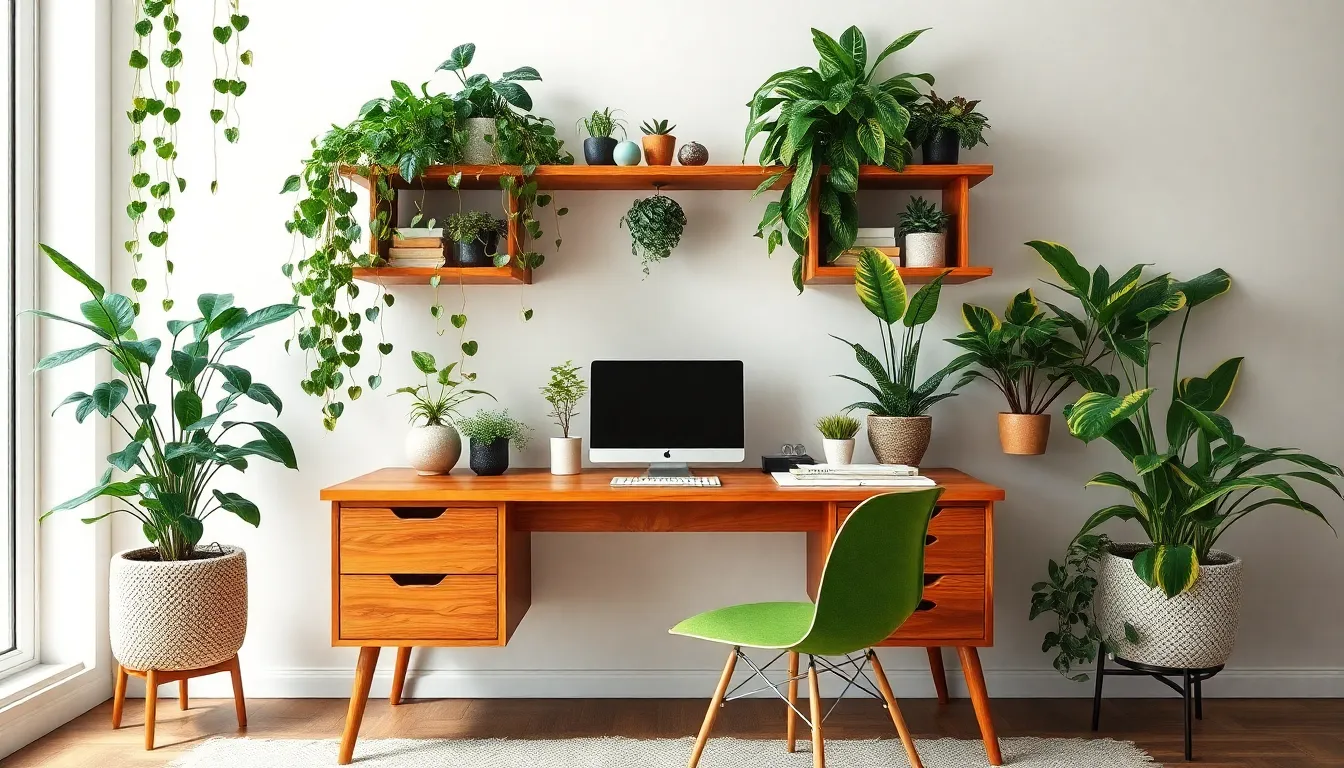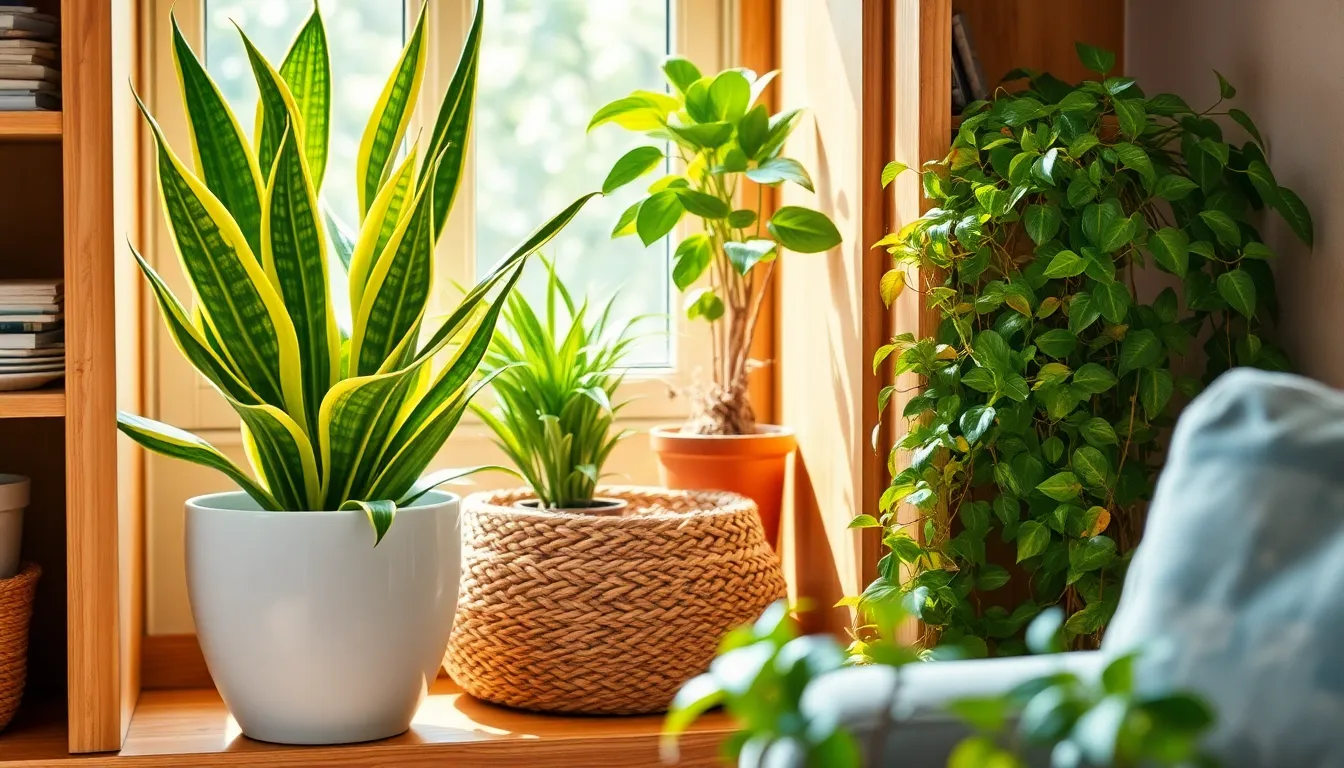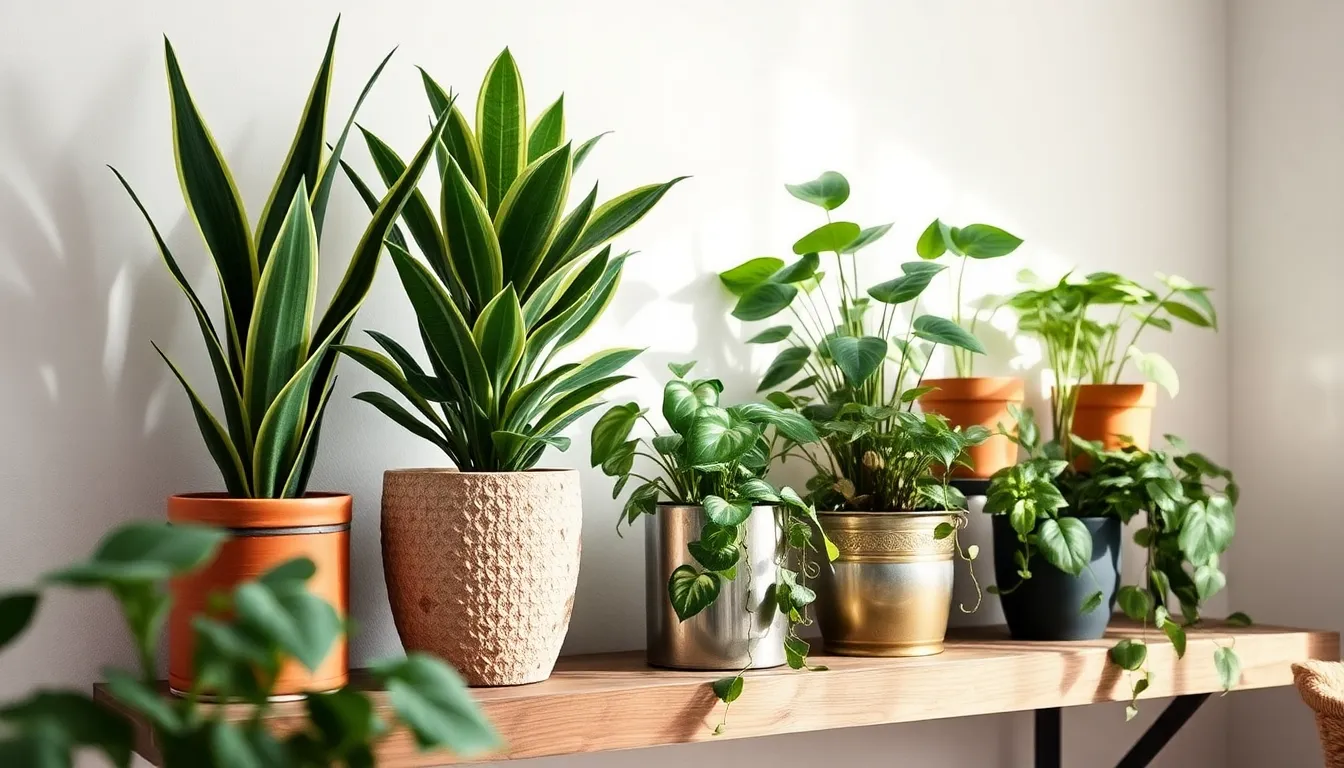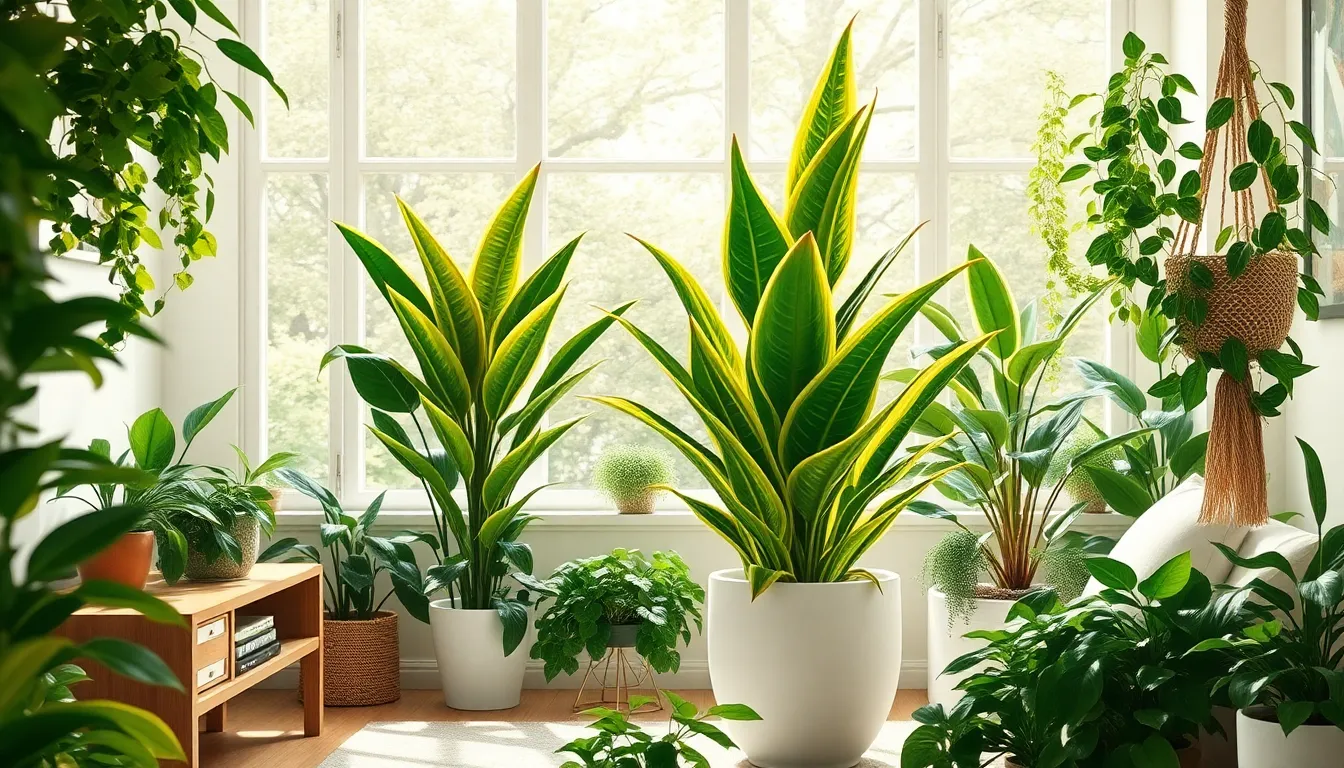In today’s fast-paced world, where many of us find ourselves working from home, creating a vibrant and inspiring home office environment is more important than ever. Houseplants offer a delightful way to bring nature indoors, enliven your workspace, and even improve air quality—a win-win for both productivity and well-being.
Whether you’re a seasoned plant enthusiast or just beginning your green thumb journey, choosing the right houseplants can transform your home office into a sanctuary of calm and creativity. In this article, we’ll explore ten stunning houseplants that not only beautify your space but are also easy to care for, making them perfect companions for any work environment.
From the lush, trailing vines of the Pothos to the architectural elegance of the Snake Plant, each plant has its own unique charm and benefits. You’ll discover tips on light, watering, and positioning to help your plants thrive, all while infusing your workspace with a touch of nature’s grace. Let’s dig into the world of houseplants and see how they can elevate your home office to new heights of tranquility and inspiration.
Creating a Green Workspace
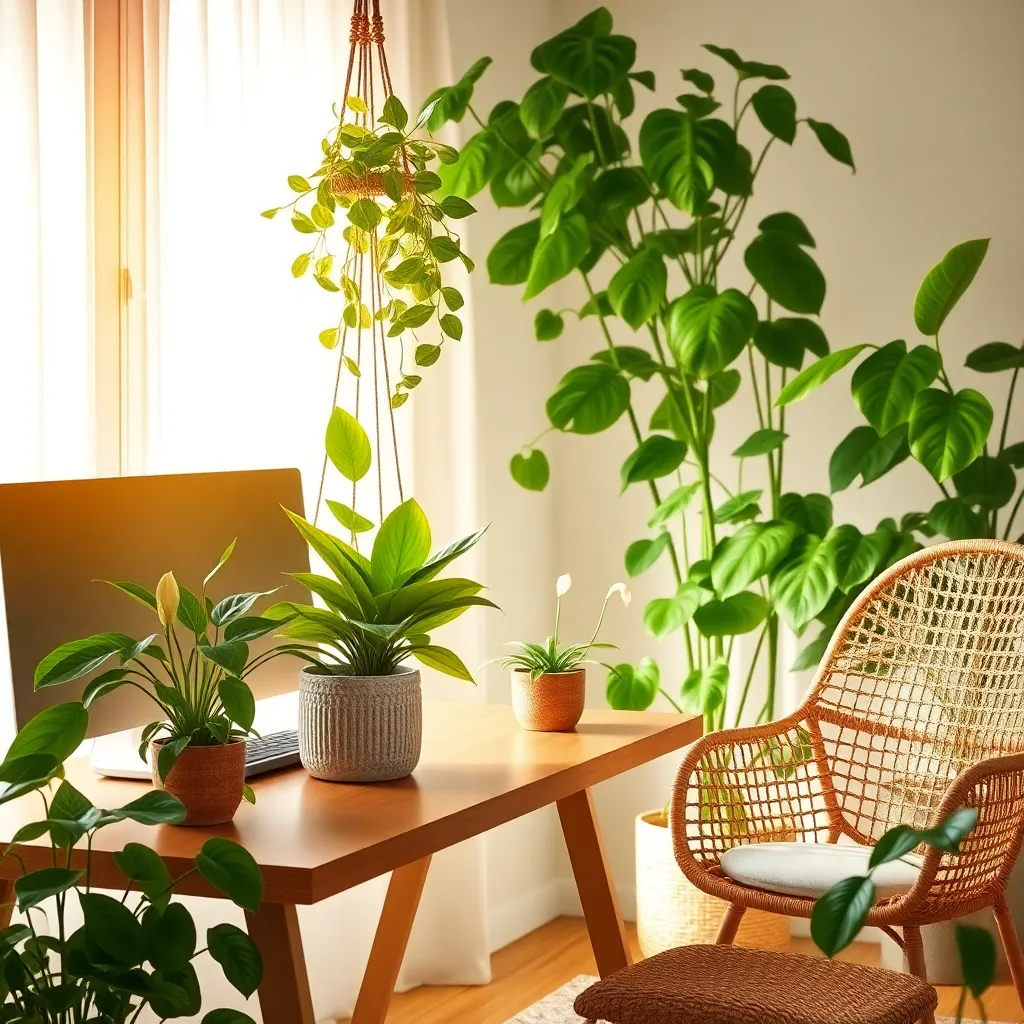
Adding houseplants to your office environment can greatly enhance both the aesthetic and functional quality of your workspace. Research shows that plants can improve air quality and reduce stress levels, making them a perfect addition to any work setting.
To start creating your green workspace, choose plants that thrive in the lighting conditions of your office. Consider low-light options such as the Snake Plant or Pothos, which are both forgiving and easy to care for.
Proper placement is key to ensuring your plants receive the right amount of light and airflow. Place them near windows if they require bright light, or use indirect lighting solutions for those that prefer shade.
Watering is another crucial aspect of plant care that can affect their health. Generally, most office plants prefer to dry out slightly between waterings, so it’s wise to check the top inch of soil before adding water.
For those ready to take their plant care to the next level, consider investing in a moisture meter to avoid overwatering. Additionally, using a well-draining potting mix will help prevent root rot and maintain overall plant health.
Fertilization can enhance growth and vitality, especially during the growing seasons of spring and summer. Use a balanced, water-soluble fertilizer every four to six weeks to provide essential nutrients.
Benefits of Office Houseplants
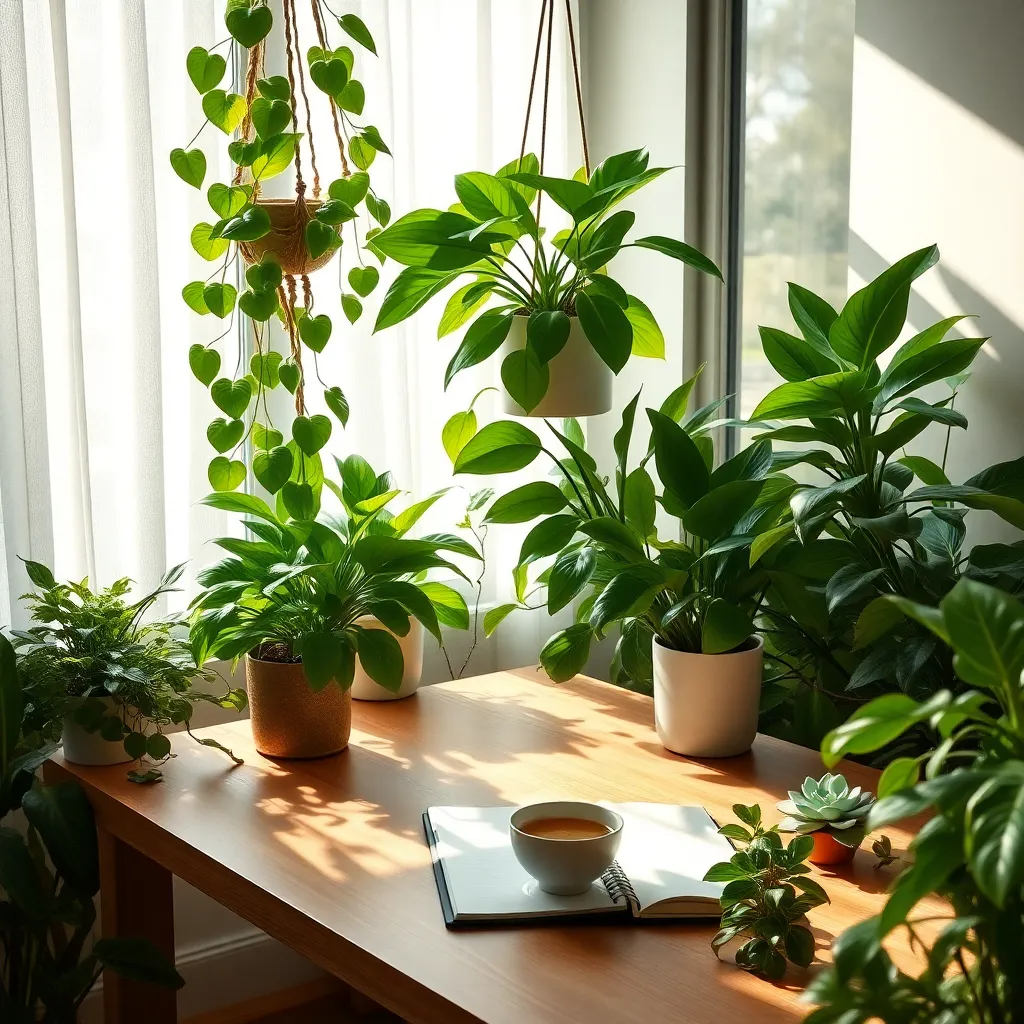
Adding houseplants to your office space can significantly boost your productivity and creativity. Studies have shown that just a few plants can help reduce stress and create a more calming environment.
Plants such as the Snake Plant or Peace Lily can filter indoor air pollutants, improving air quality. This improvement helps maintain a healthier workspace, contributing to overall well-being and better focus.
For beginners, start with low-maintenance plants like the ZZ Plant, which thrives in low light and requires infrequent watering. A simple watering schedule of once every two weeks is sufficient, making it perfect for busy office environments.
Advanced gardeners might enjoy the challenge of nurturing a Bonsai tree, which requires precise watering and pruning. Make sure to use a well-draining soil mix and maintain regular trimming to keep its shape and size ideal for desk placement.
Consider using a self-watering pot for plants that require consistent moisture, such as the Boston Fern. This setup can help you maintain the right humidity levels without the need to water daily, especially in dry office environments.
Experiment with grouping plants together to create a mini jungle effect, which can enhance visual interest and increase humidity for your plants. Grouping also allows for shared resources, such as light and moisture, benefiting all plants involved.
- Choose pots with drainage holes to prevent root rot.
- Position plants near windows for natural light, or supplement with grow lights as needed.
- Regularly dust leaves to ensure plants can photosynthesize efficiently.
Choosing Low-Light Varieties
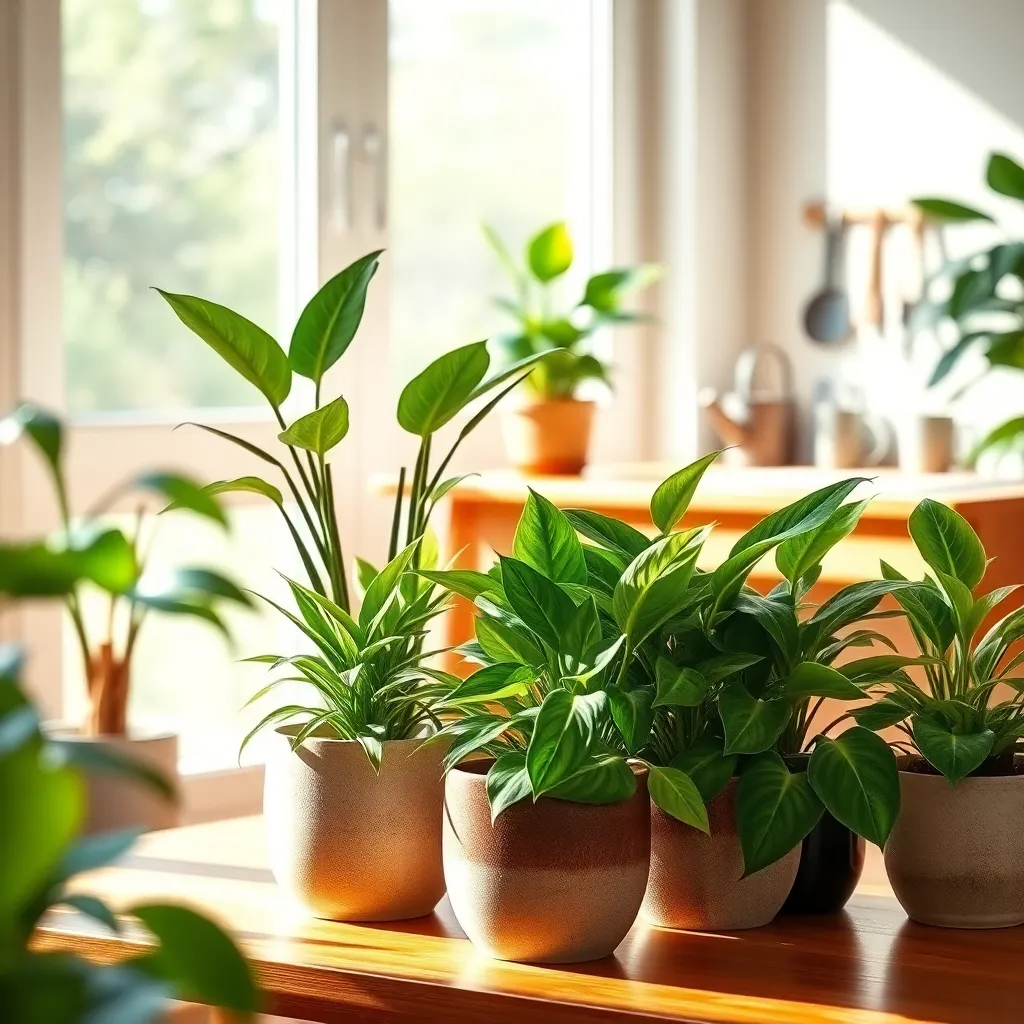
When selecting houseplants for your home office, choosing low-light varieties can be a game-changer. These plants thrive in conditions often found in indoor workspaces, where natural light may be limited.
Consider the popular Snake Plant (Sansevieria), known for its resilience and low-light adaptability. It requires minimal watering, about every two to three weeks, making it perfect for busy schedules.
Another excellent choice is the Pothos (Epipremnum aureum), which can tolerate a wide range of lighting conditions. For best results, allow the soil to dry out between waterings, and use a well-draining potting mix.
For a touch of elegance, the ZZ Plant (Zamioculcas zamiifolia) is an ideal candidate. It flourishes in low light and needs watering only when the top inch of soil feels dry, promoting ease of care and maintenance.
Here are some additional tips to help your low-light plants thrive:
- Rotate your plants every few weeks to ensure all sides receive some light exposure.
- Dust leaves regularly to maximize photosynthesis efficiency.
- Consider using a grow light if natural light is extremely limited, especially during winter months.
By choosing the right low-light varieties and following these care tips, your home office will remain vibrant and inviting. Even novice gardeners can enjoy a lush indoor environment with minimal effort.
Top Air-Purifying Plants
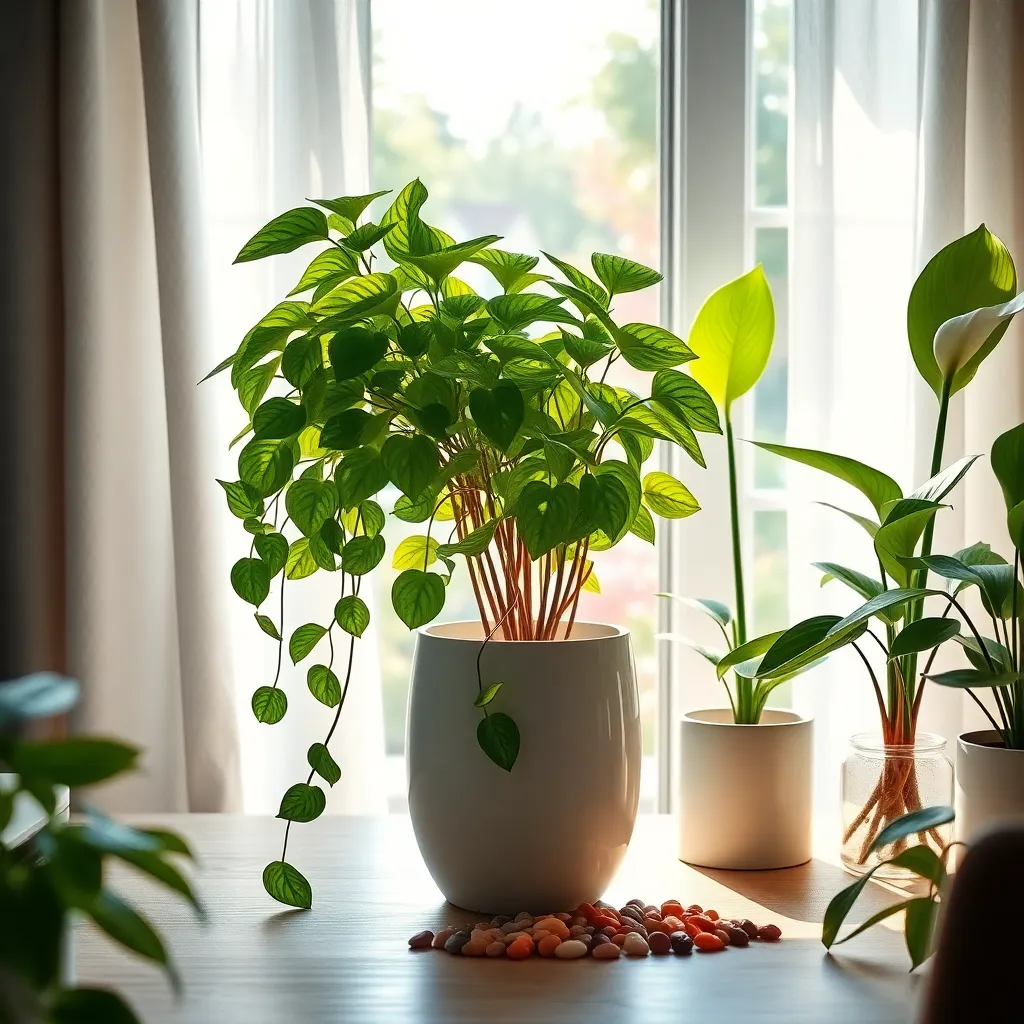
Bringing plants into your home office not only enhances the aesthetic but also improves air quality. Plants like the Spider Plant are excellent for beginners, as they thrive in bright, indirect light and require watering only once the soil is dry to the touch.
Another great choice for air purification is the Peace Lily, which can tolerate low light and needs a consistently moist soil. Make sure to wipe its leaves with a damp cloth occasionally, as this helps the plant maximize its air-purifying abilities.
For those who can dedicate a bit more time, the Boston Fern is a lush option. These ferns thrive in high humidity, so placing them in a bathroom or using a pebble tray with water can help maintain the right moisture levels.
When choosing soil for air-purifying plants, opt for well-draining potting mixes to prevent root rot. Consistent care is key, so consider setting a weekly reminder to check soil moisture and adjust watering as needed.
Compact Plants for Small Desks
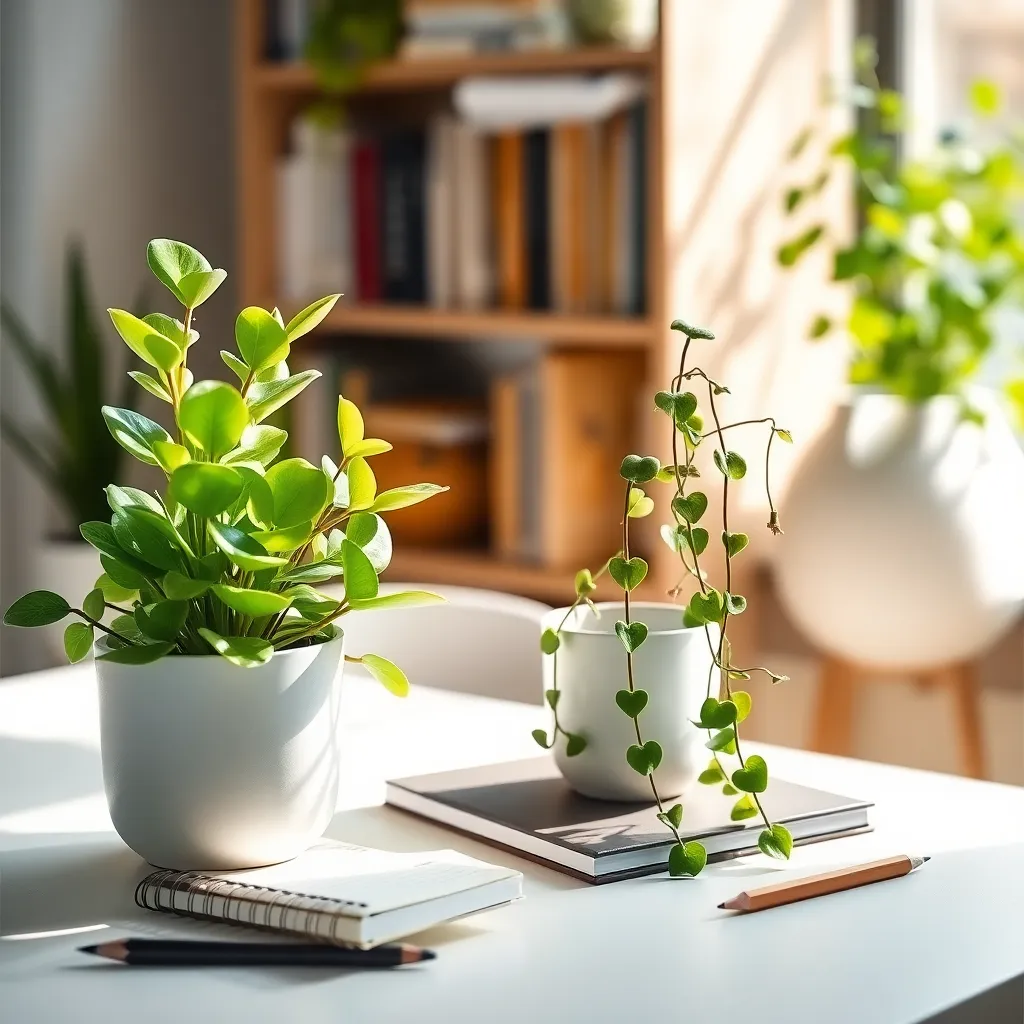
For those with limited desk space, compact plants are the perfect solution to bring a touch of nature indoors. Succulents like the Echeveria are ideal due to their small size and low maintenance needs.
Position succulents in a spot where they receive bright, indirect sunlight to thrive. Water them sparingly, allowing the soil to dry out completely between waterings, which typically means every two weeks.
Another excellent choice is the Pothos plant, known for its trailing vines and air-purifying qualities. This plant is forgiving and can adapt to low-light conditions, making it a versatile option for any desk.
When watering Pothos, ensure the top inch of soil is dry before giving it a drink. Use a well-draining potting mix to prevent root rot, and consider occasional pruning to maintain its compact shape.
If you’re looking for something a bit different, the Fittonia, also known as the nerve plant, offers vibrant foliage that can brighten up any workspace. This plant prefers moderate to high humidity, so mist it regularly or place it near a small humidifier.
Fittonias thrive in indirect light and require consistently moist soil, but be cautious not to overwater them. Incorporating these compact plants into your workspace not only enhances aesthetics but also contributes to a healthier, more inspiring environment.
Low-Maintenance Plant Selections
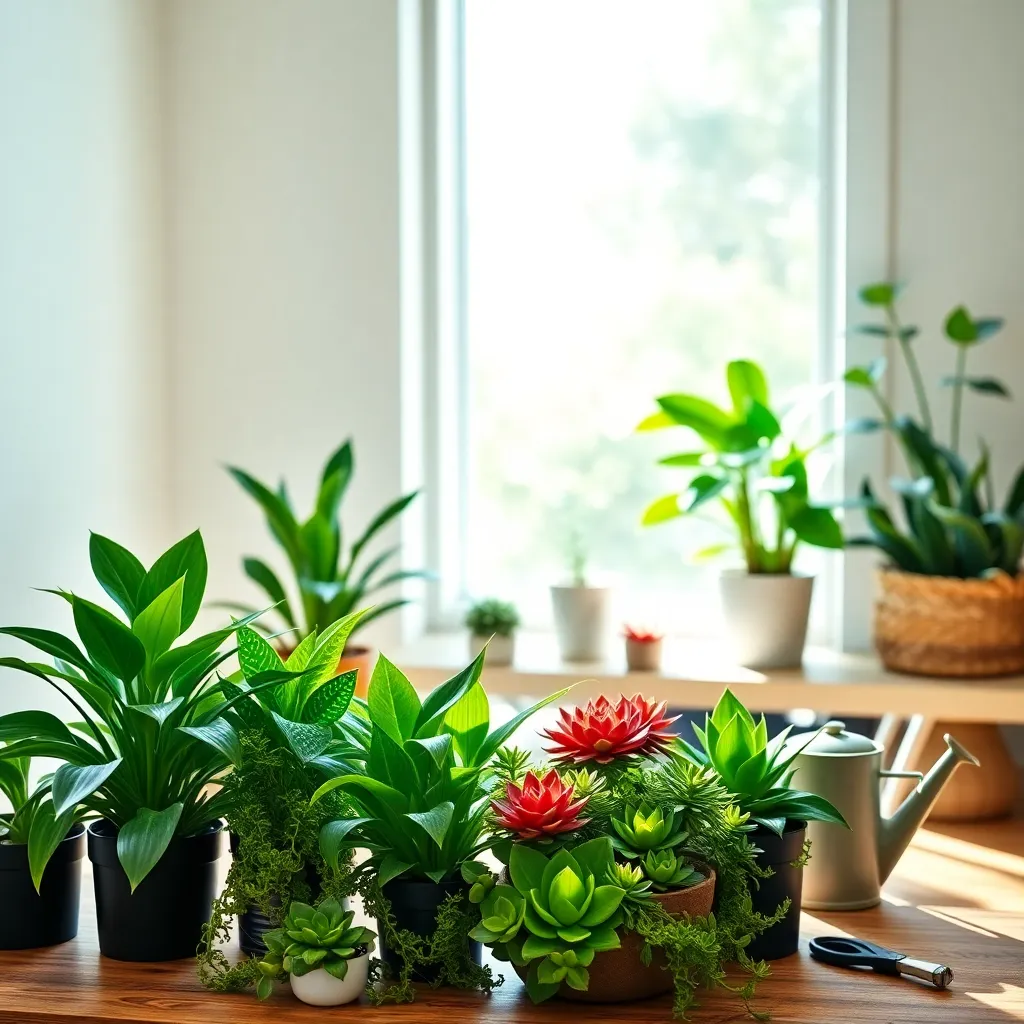
For those looking for low-maintenance options, the Snake Plant (Sansevieria trifasciata) is a fantastic choice. Known for its ability to thrive in various light conditions, this plant only requires watering every couple of weeks, making it perfect for busy schedules.
Another excellent option is the ZZ Plant (Zamioculcas zamiifolia), which is both drought-tolerant and resilient. It prefers indirect light and only needs to be watered when the soil is dry, making it incredibly forgiving for beginners.
Consider the Pothos (Epipremnum aureum), a plant noted for its adaptability and vibrant trailing vines. It thrives in low-light conditions and can tolerate infrequent watering, flourishing in well-draining potting mix.
Ensure your Snake Plant has well-draining soil; a cactus or succulent mix is ideal to prevent root rot. Additionally, rotating the pot occasionally will promote even growth, as these plants tend to lean toward the light source.
The ZZ Plant benefits greatly from being potted in a container with drainage holes to avoid waterlogging. Fertilize it sparingly, once during the growing season, to maintain its healthy, glossy leaves.
For Pothos, use a general-purpose potting soil enhanced with a bit of perlite for aeration. Pruning the vines helps maintain their bushy appearance and can also be used to propagate new plants.
Boosting Productivity with Greenery
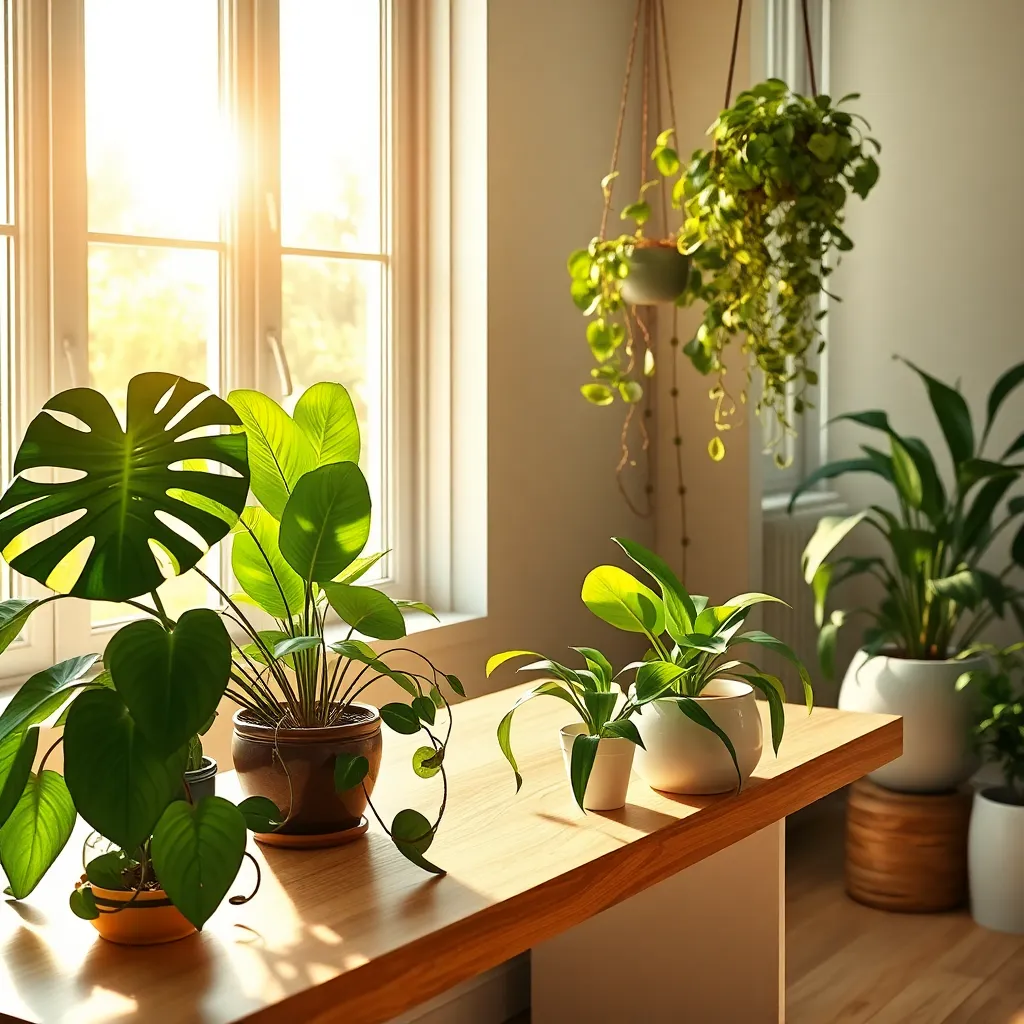
Incorporating houseplants into your home office can significantly enhance productivity by improving air quality and providing a calming atmosphere. Studies show that greenery can reduce stress and increase focus, making it an ideal addition to workspaces where concentration is key.
Consider selecting plants that thrive in low-light conditions to ensure they flourish in typical indoor environments. For instance, Snake Plants (Sansevieria) and ZZ Plants (Zamioculcas zamiifolia) are excellent choices due to their tolerance for low light and infrequent watering.
Proper plant care is crucial for maintaining their health and maximizing their benefits. Ensure you use well-draining soil, such as a mix of potting soil and perlite, to prevent root rot and support healthy growth.
Watering schedules can vary depending on the plant species and environmental conditions. Generally, it’s best to water your plants when the top inch of soil feels dry to the touch. Overwatering is a common mistake, so always err on the side of caution and allow the soil to dry out between waterings.
For those looking to boost productivity further, consider integrating a few advanced techniques into your plant care routine. Regularly rotating your plants helps them grow evenly and ensures all sides receive adequate light. Additionally, periodically cleaning the leaves with a damp cloth can help them photosynthesize more efficiently and maintain a vibrant appearance.
Stylish Planters and Containers
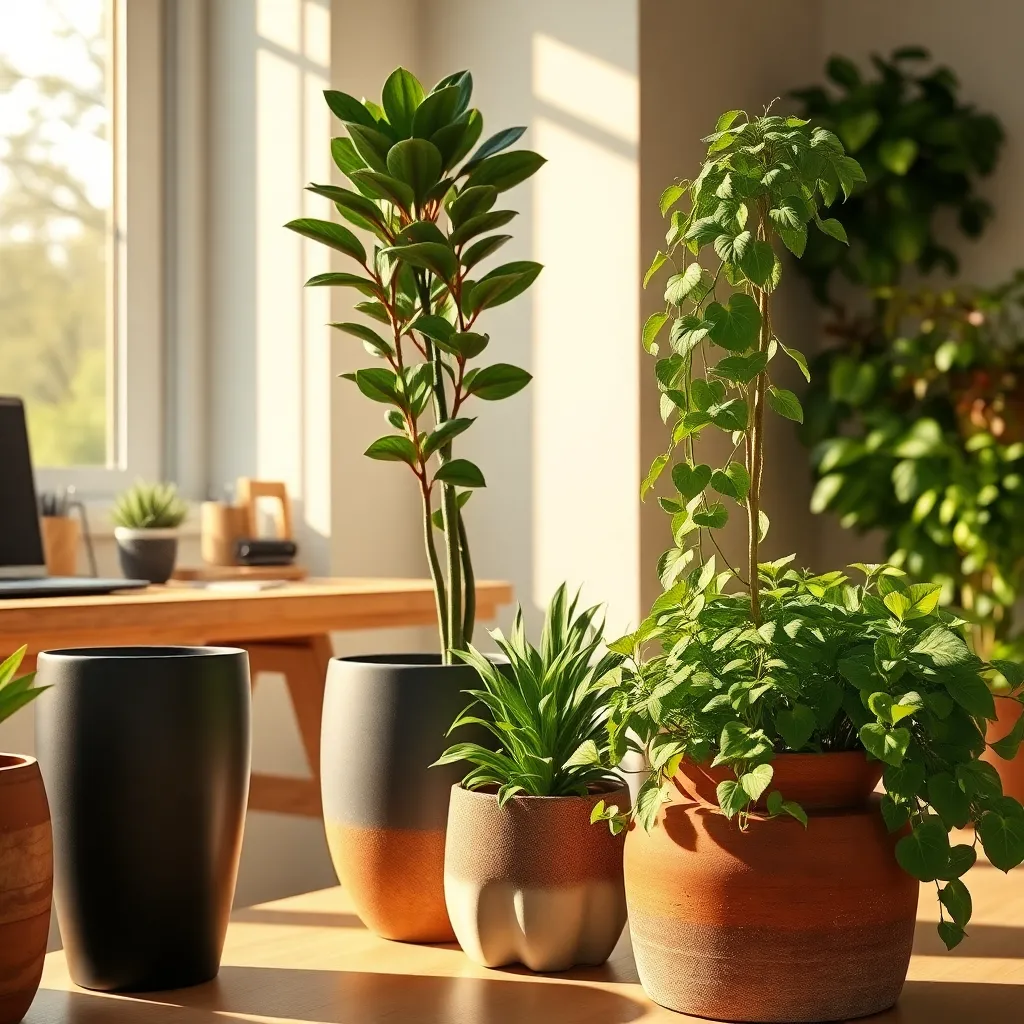
Choosing the right planters and containers can significantly enhance the aesthetic of your home office while providing the perfect environment for your houseplants. Opt for containers with drainage holes to prevent waterlogging, which can lead to root rot in plants like pothos and snake plants.
Consider using self-watering pots for busy work schedules, ensuring your plants stay hydrated without daily attention. These containers are particularly beneficial for moisture-loving plants like peace lilies, which thrive with consistent soil moisture.
Experiment with a variety of materials such as ceramic, terracotta, or metal to match your office decor while providing functional benefits. For instance, terracotta pots are excellent for succulents because they allow the soil to dry out between waterings, preventing overwatering.
Size is crucial when selecting a planter; ensure it provides adequate space for root growth to avoid stunted plant development. A general rule of thumb is to choose a pot that is 2 inches wider in diameter than the plant’s current container to accommodate growth.
Care Tips for Office Plants
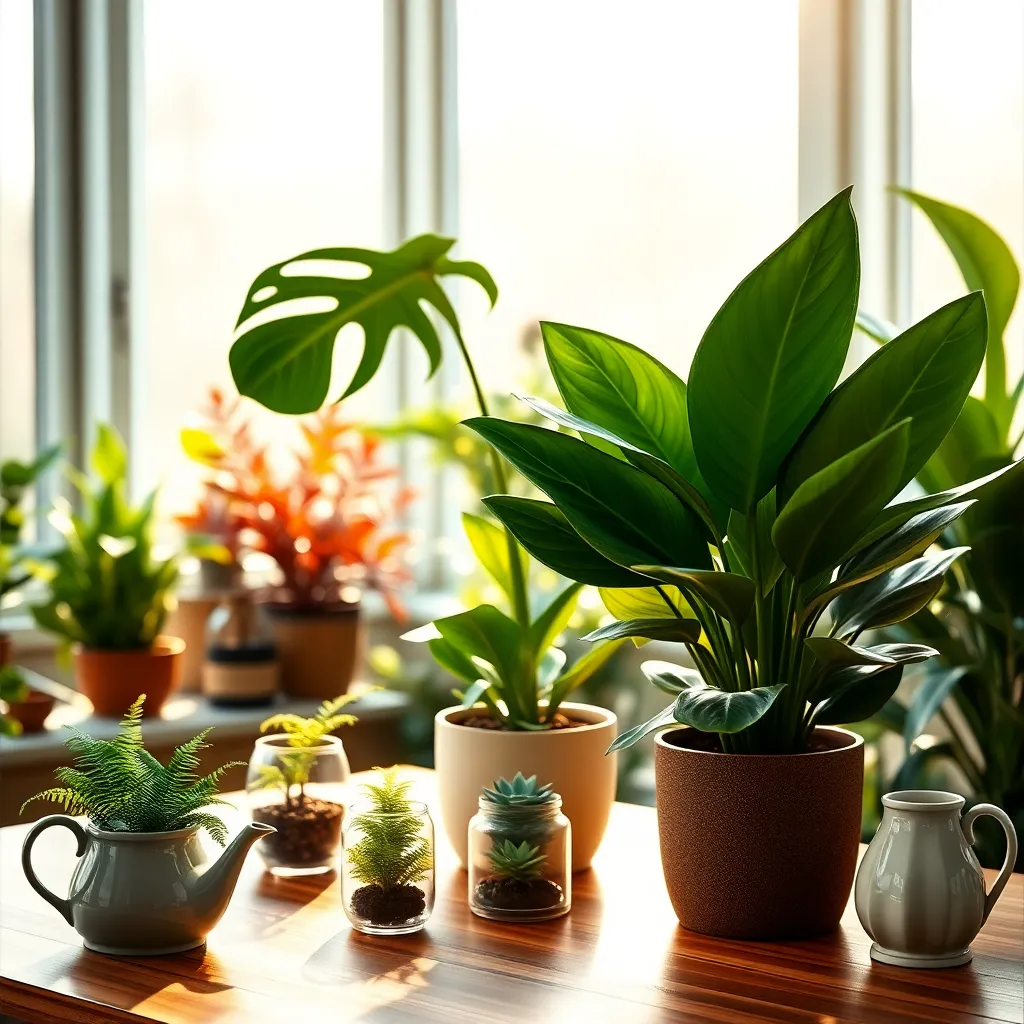
Office plants can transform your workspace into a refreshing and inspiring environment. To ensure they thrive, it’s crucial to provide proper care tailored to their individual needs.
Start by selecting the right plants that can tolerate lower light conditions, such as the ever-popular Snake Plant or the hardy Pothos. These are excellent choices as they require minimal light and are forgiving of occasional neglect.
When it comes to watering, most office plants prefer a routine that mimics their natural habitat. Generally, watering once a week is adequate, but always check the top inch of soil; if it’s dry, it’s time to water.
It’s important to use the right type of soil, as it directly affects the plant’s health. A well-draining potting mix is ideal for most houseplants; you can achieve this by adding perlite or sand to your soil blend.
For those looking to enhance plant growth, consider using a balanced, water-soluble fertilizer every four to six weeks during the growing season. This encourages lush foliage and vibrant growth, especially for plants like the Peace Lily which thrives with a bit of extra nutrition.
Advanced gardeners might experiment with humidity levels to optimize plant health. Many office plants benefit from increased humidity, which can be achieved by placing a small humidifier nearby or grouping plants together.
Lastly, regular maintenance like dusting leaves and trimming dead foliage can keep your plants looking their best. These simple actions not only enhance aesthetics but also promote better growth by allowing the plant to absorb more light efficiently.
Rotating Plants for Optimal Growth
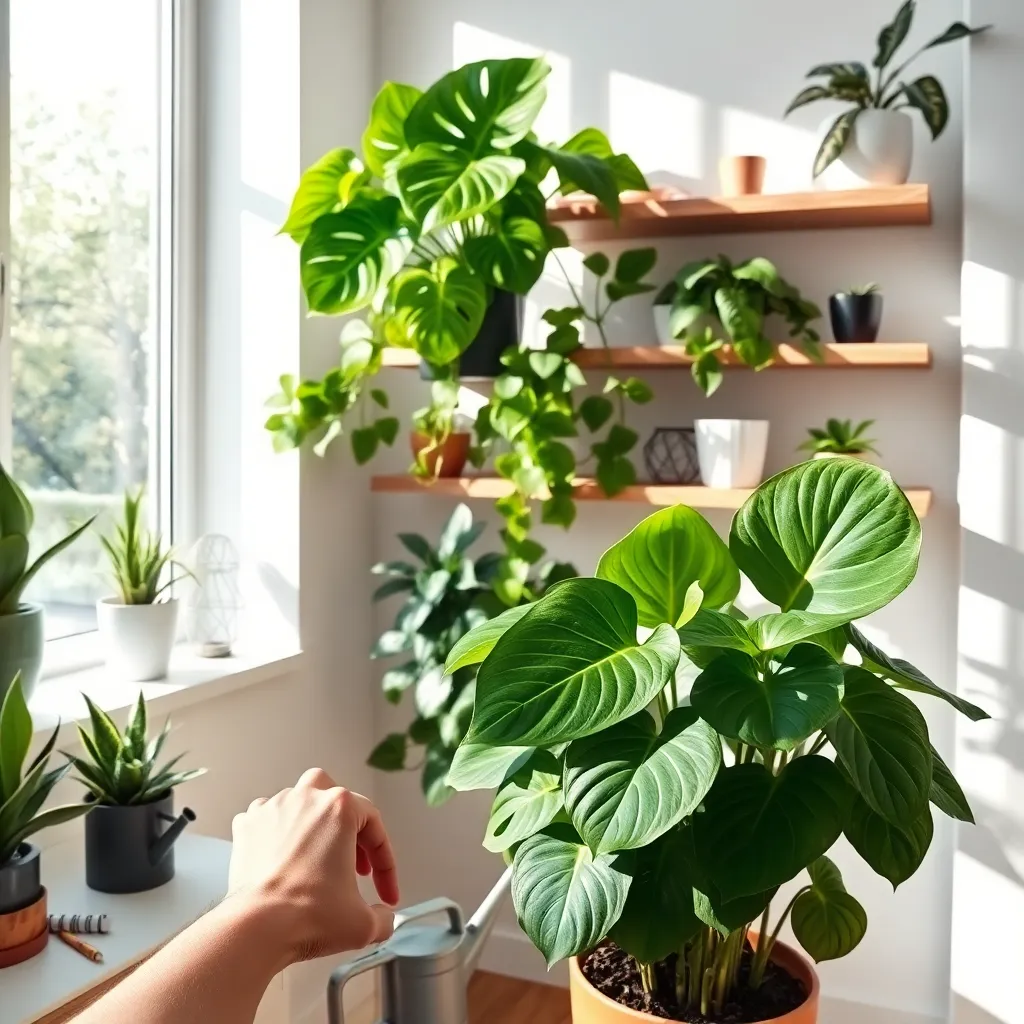
Rotating your houseplants is a simple yet effective technique to ensure they grow evenly and remain healthy. By turning the pots 90 degrees every week, you encourage even exposure to light, which helps in promoting balanced growth.
It’s important to note that some plants, such as the popular pothos, thrive in low to medium light conditions, so their rotation might be less frequent. However, for light-loving plants like succulents, regular rotation is crucial to prevent them from leaning towards the light source.
For those who have plants situated on windowsills, rotating them prevents one-sided growth and helps avoid the plant becoming top-heavy. Additionally, this practice can help you spot any potential issues, such as pests or disease, since you’ll be examining the plant from different angles.
Beyond just rotating, consider the environment in which your plants are placed. Ensure the soil type is suitable for your specific plant; for instance, succulents require well-draining soil, while ferns thrive in a more moisture-retentive mix.
Conclusion: Growing Success with These Plants
In exploring the world of houseplants for home offices, we’ve uncovered ten remarkable choices that breathe life into both your workspace and your relationships. From the resilient Snake Plant to the nurturing Pothos, each plant symbolizes essential relationship qualities—resilience, adaptability, and growth. The elegant Peace Lily reminds us of harmony, while the lively Spider Plant encourages playfulness and the exchange of ideas. The calming presence of Lavender promotes peace, much like the Monstera inspires exploration and openness. Meanwhile, the ZZ Plant teaches patience, and the Fiddle Leaf Fig embodies strength. Finally, the Air Plant and Aloe Vera remind us of the importance of self-care and healing.
Now, take a moment to choose one plant that resonates with a specific aspect of your relationship you wish to nurture. Place it in your home office as a daily reminder of your commitment to growth and connection.
Bookmark this article as your go-to guide for enhancing your home environment and relationships. Remember, a flourishing workspace mirrors a thriving relationship. As you cultivate these green companions, may your relationships grow stronger, more resilient, and deeply fulfilling. Save this guide and let it be your compass for ongoing relationship success.

